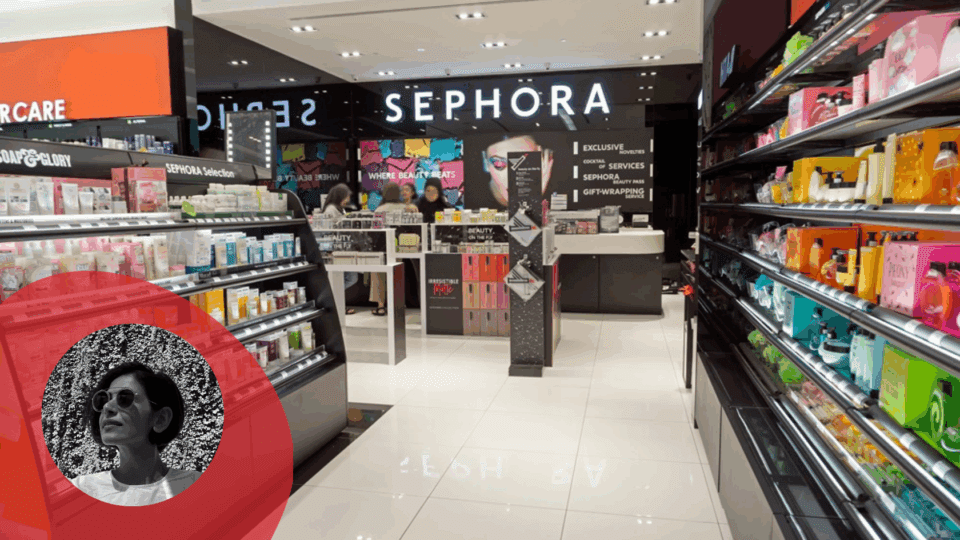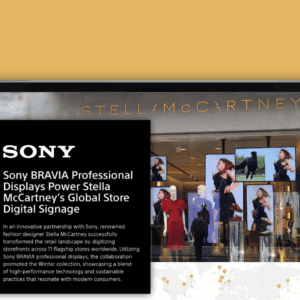For years, headlines have sounded the death knell of physical retail. But Sephora’s renewed investment in brick-and-mortar redesign tells an entirely different story. The renaissance of physical retail is here: an evolution of the status quo that will leave brands behind if they fail to adapt to new consumer behaviors and expectations.
Today’s consumers, especially Gen Z and millennials, are returning to stores not out of necessity but out of desire — for community, discovery and perhaps most importantly, the experience. These digitally native shoppers still love online convenience but increasingly crave in-person experiences that can’t be replicated or emotively reciprocated on a screen.
This shift demands a new approach. The in-store experience is increasingly becoming an extension of the online shopping experience, a canvas for storytelling, a stage for education and a connecting point between omnichannel experiences.
At Front Row, we’ve seen firsthand how brands that embrace this evolution not only stay relevant but thrive in this new era. By blending our expertise in ecommerce, omnichannel strategy and retail media, we help brands turn their brick-and-mortar presence into a competitive advantage.
Why Physical Retail Still Matters in the Digital Age
Physical retail in 2025 and beyond is playing a completely different role in the customer journey. It isn’t going away, just adapting to a new consumer.
Experience-driven shopping.
Online shopping is efficient, but not immersive. Consumers, especially in beauty, health and wellness categories, want to see, touch, smell and try before they buy. Sephora’s success is built on this principle; interactive displays, shade-matching tools, beauty bars. It’s less about the transaction, more about the transformation.
Discovery and trial.
Retail shelves remain unmatched for product discovery. Shoppers browsing in-store encounter new ingredients, emerging brands and unexpected finds in ways algorithms can’t necessarily predict. For indie brands, getting into physical retail means tapping into a new stream of organic awareness and trial.
Community and brand loyalty.
Stores are becoming spaces for connection. Brands like Glossier and E.l.f. are turning their storefronts into cultural hubs by hosting panels, masterclasses and meetups. This fosters loyalty far beyond the checkout line. At Front Row, we often remind clients: a store can be your best marketing tool if it’s treated as more than just real estate. Experiences matter.
Take our work with La Mer, for example. The beauty brand approached Front Row to develop physical retail experiences to celebrate the Year of the Dragon for Lunar New Year in collaboration with artist Zhang Xiaodong.
We created an immersive experience with an art exhibition component that mimics the sinuous shape and the colorful scales of a Chinese mythological dragon. Inspired by Xiadong’s work, we revisited traditional artisanal techniques of paper folding to create unique retail environments in which La Mer products can be featured in their biggest Chinese New Year campaign worldwide.
We put creating a memorable, multisensory encounter at the center of La Mer’s activation, reinforcing the brand’s luxury status and cultural relevance. When these core principles are implemented, sales will follow.
Consumers crave experiences that digital simply can’t replicate. Whether it’s trying a new serum, attending a skincare masterclass or walking through an exhibition infused with artistry and tradition, physical spaces offer the kind of tactile, community-driven engagement that builds brand love.
The New In-Store Playbook
Moving into this new era of in-retail experiences, brands should start by mastering the art of first impressions, then build meaningful engagement from there. As a foundational component of retail design, brands need to remember the “10-3-1” Rule of Visual Merchandising:
10 Feet – Grab Attention
From across the aisle or the moment someone walks in, your brand needs to pop and pass the eye test from afar. This means bold signage, clear logos, standout packaging and high-impact visuals that signal who you are at a glance.
3 Feet – Drive Engagement
At this distance, it’s about inviting interaction. Use storytelling elements — ingredient callouts, digital screens and product education — to deepen interest. Samples, testers and QR codes linking to social content or reviews create a bridge between physical and digital spaces, which is increasingly important with digital native consumers.
1 Foot – Convert Seamlessly
Up close, the path to purchase should be frictionless. Think intuitive layouts, clear pricing, digital screens and product education to deepen trust. Every point of reference should work toward one goal: making it easy to say yes.
Our work with L’Occitane exemplifies these principles in practice. The brand came to Front Row with a tall task: forge a second global flagship within Toronto’s prestigious Yorkdale Mall, channeling a new essence of Provence to captivate and engage visitors.
We conceived an environment brimming with enchanting surprises, each aimed at encapsulating the mystical allure of Provence. Inspired by the profound words of the founder, “Journeying through Provence is a visceral experience that changes something within you,” our design narrative unfolded.
From rain shower sinks to digital immersion pods, fragrance clouds and a skincare bistro, every element was meticulously crafted to evoke moments of awe and wonderment, in line with the “10-3-1” Rule of Visual Merchandising. At different angles of the experience, customers were invited to learn and engage with the brand in a way that was fluid, organic and sparked curiosity.
Looking Ahead: The Future of Physical Retail
The next wave of physical retail is experience-first, tech-enabled and data-driven. We’re entering an era where personalization is best represented through physical stores.
Tech as a Bridge, Not a Barrier: From smart mirrors to AR try-ons and app-based loyalty perks, technology should enhance, not replace, the human aspect of shopping. At Front Row, we’re helping brands test “connected shelf” concepts that turn every product into a gateway to personalized content.
Omnichannel Integration: The most successful brands unify the online and offline experience. That means using ecommerce data to inform merchandising strategy, leveraging retail media to promote in-store offers and equipping store staff with insights from CRM tools. The store becomes a node in a larger digital ecosystem.
Retail as Content: Increasingly, retail spaces double as content studios. Whether it’s a branded TikTok moment, a livestreamed product demo or a UGC activation wall, stores now function as launchpads for digital buzz.
Rethinking Brick-and-Mortar as a Competitive Advantage
Sephora’s bet on physical retail is grounded in research and understanding of evolving consumer behavior. And they’re not alone. Brands that adapt their in-store presence to reflect today’s preferences will win. It’s about experience over efficiency, engagement over interruption.
At Front Row, we believe physical retail is one of the most powerful brand-building tools available today. But to harness it, brands must stop thinking like merchants and start thinking like creators, storytellers, and community builders.
The new in-store playbook is about forging deeper connections, telling sharper stories and meeting your consumer exactly where they are, whether that’s six feet from the shelf or six inches from their phone.
Mozh Matin is the VP of Retail and Visual Merchandising at Front Row, an industry-leading Ecommerce, Strategy and Design agency. With over 15 years of experience, Matin is a multidisciplinary creative dedicated to redefining the relationship between brand storytelling, spatial design and innovative experiences. In her role at Front Row, Matin delivers bespoke solutions for brands aiming to enter, scale or revolutionize their physical presence. She has led large-scale overhaul projects for major brands such as Sol de Janeiro, Fenty Beauty, La Mer, Elemis, Tatcha, Saie and MAC, reshaping their retail concepts and experiences across the industry.








